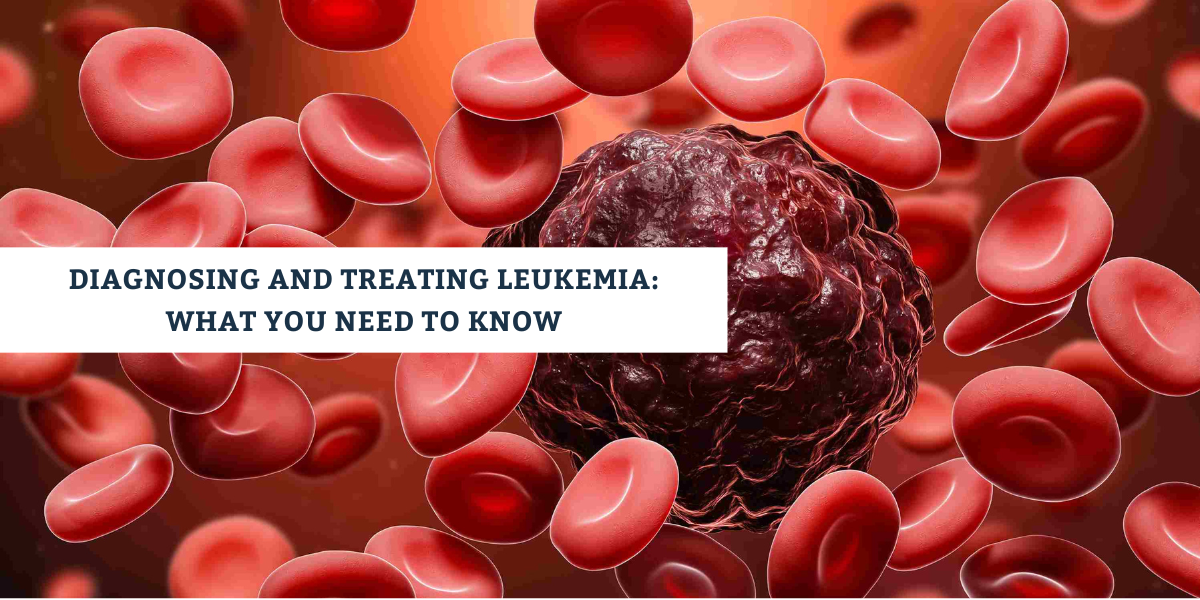Leukemia is a type of cancer that affects the blood and bone marrow. It occurs when the body produces too many abnormal white blood cells, which can interfere with the body's ability to fight infection and carry oxygen. There are several types of leukemia, including acute lymphoblastic leukemia (ALL), acute myeloid leukemia (AML), chronic lymphocytic leukemia (CLL), and chronic myeloid leukemia (CML). While the exact cause of leukemia is not known, several risk factors have been identified, including exposure to certain chemicals, genetic abnormalities, and a weakened immune system.
In this article, we will discuss the different types of leukemia, how it is diagnosed, and the various treatment options available.
Types of Leukemia
Leukemia is broadly categorized into two main types: acute and chronic leukemia. Acute leukemia progresses rapidly and requires immediate treatment, while chronic leukemia develops slowly and may not require treatment for many years.
Acute Lymphoblastic Leukemia (ALL)
ALL is the most common type of leukemia in children, accounting for around 80% of all childhood leukemia cases. It is also the most common type of leukemia in adults under the age of 30. ALL develops in the lymphoid cells, which are a type of white blood cell that helps the body fight infection. Lymphoid cells are involved in the adaptive immune system, which means they can recognize and "remember" specific pathogens, allowing for a quicker and more targeted response upon subsequent exposures. It can progress quickly and requires immediate treatment.
Symptoms of ALL may include fatigue, frequent infections, fever, easy bruising or bleeding, bone pain, and swollen lymph nodes. Diagnosis is usually made through a physical exam and blood tests to check for abnormal white blood cells. A bone marrow biopsy may also be necessary to confirm the diagnosis.
Treatment for ALL usually involves a combination of chemotherapy and radiation therapy. Chemotherapy uses drugs to kill cancer cells, while radiation therapy uses high-energy radiation to destroy cancer cells. Stem cell transplant may also be necessary in some cases.
Acute Myeloid Leukemia (AML)
AML is a type of leukemia that develops in the myeloid cells, which are a type of white blood cell that helps the body fight infection. Myeloid cells have a broader range of functions, including phagocytosis (engulfing and destroying pathogens), antigen presentation (presenting antigens to lymphoid cells to initiate an immune response), and the release of inflammatory mediators.
They also play a role in tissue repair and wound healing. AML is more common in adults than in children, and it progresses quickly. Symptoms of AML may include fatigue, frequent infections, fever, easy bruising or bleeding, and bone pain.
Diagnosis is usually made through a physical exam and blood tests to check for abnormal white blood cells. A bone marrow biopsy may also be necessary to confirm the diagnosis.
Treatment for AML usually involves chemotherapy and sometimes radiation therapy. Stem cell transplant may also be necessary in some cases.
Chronic Lymphocytic Leukemia (CLL)
CLL is the most common type of leukemia in adults, accounting for around one-third of all leukemia cases. It develops in the lymphoid cells and progresses slowly. In many cases, people with CLL have no symptoms for many years.
Symptoms of CLL may include fatigue, swollen lymph nodes, and frequent infections. Diagnosis is usually made through a physical exam and blood tests to check for abnormal white blood cells. A bone marrow biopsy may also be necessary to confirm the diagnosis.
Treatment for CLL may not be necessary in the early stages of the disease. However, as the disease progresses, chemotherapy, radiation therapy, and targeted therapy may be used.
Chronic Myeloid Leukemia (CML)
CML is a type of leukemia that develops in the myeloid cells and progresses slowly at first. It is more common in adults than in children. Symptoms of CML may include fatigue, weight loss, and abdominal discomfort.
The diagnosis of leukemia typically involves a thorough physical examination along with blood tests to detect any irregularities in white blood cells. To ensure accuracy, a bone marrow biopsy may be required to provide confirmation. This procedure involves extracting a small sample of bone marrow for further analysis, aiding in the definitive identification of leukemia and its specific type. Through these diagnostic methods, healthcare professionals can establish an accurate diagnosis and proceed with appropriate treatment strategies.
Treatment for CML may include targeted therapy, which uses drugs to target specific molecules in the cancer cells. In some cases, chemotherapy or stem cell transplant may also be necessary.
Diagnosing Leukemia
The diagnosis of leukemia usually begins with a physical exam and medical history. The doctor will ask about symptoms and any risk factors for leukemia, such as exposure to certain chemicals or a family history of the disease. Blood tests will also be done to check for abnormal white blood cells.
If leukemia is suspected, a bone marrow biopsy may be done. During this procedure, a small sample of bone marrow is removed from the hip bone or another large bone and examined under a microscope for the presence of abnormal cells.
Additional tests may also be done to determine the type and stage of leukemia. These may include:
- Flow cytometry: This test uses special antibodies to identify different types of cells in the blood or bone marrow.
- Cytogenetic analysis: This test examines the chromosomes in the cancer cells to look for abnormalities.
- Imaging tests: These tests, such as CT scans or MRI, can help determine if the cancer has spread to other parts of the body.
Vanya Health and Leukemia Care
Vanya Health is a healthcare company that specializes in providing comprehensive care and support for individuals with leukemia. Vanya Health offers personalized care plans that are tailored to each individual's unique needs and circumstances.
Vanya Health's care team includes oncologists, hematologists, nurses, and other healthcare professionals who are experienced in treating leukemia. They work together to provide a coordinated approach to care that focuses on the whole person, not just the disease.
Conclusion
Leukemia is a complex and challenging disease that requires specialized care and support. Early diagnosis and treatment are essential for improving outcomes and quality of life for individuals with leukemia.
For a personalised treatment plan,video consultation with top doctors.
Click the below button







